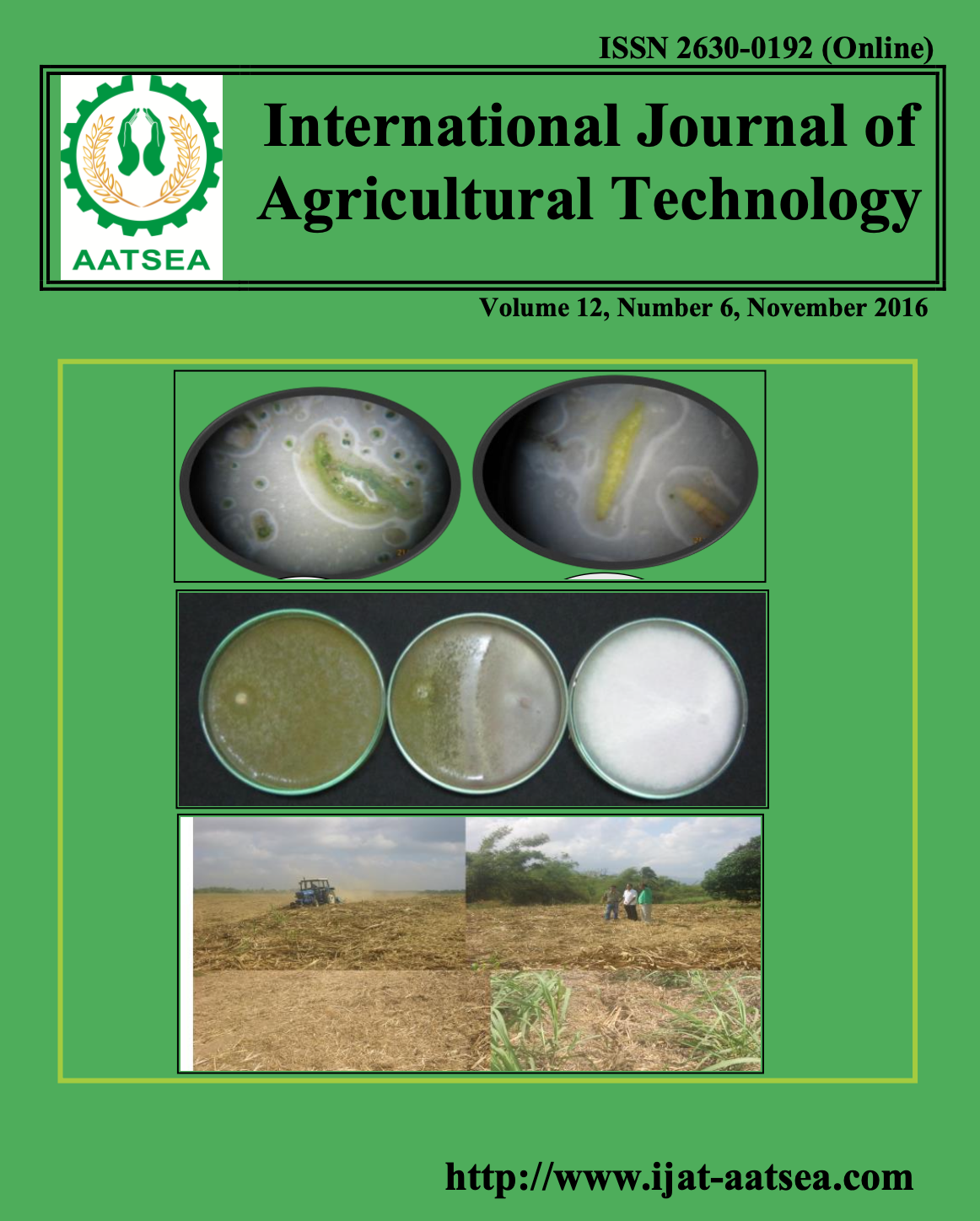Detrashing sugarcane stalks: The 1st critical step to the shift to organic farming in sugarcane Production
Main Article Content
Abstract
Article Details

This work is licensed under a Creative Commons Attribution-NonCommercial-NoDerivatives 4.0 International License.
References
Abrigo, C. C. (1981). Organic fertilizer from cane trash as soil ameliorant. Proceedings of the 28th Annual Convention, Philsutech. pp. 448-462.
Amre, D. K., Infante-Rivard, C., Dufresne, A., Durgawale, P. M. and Ernst, P. (1999). Case-control study of lung cancer among sugar cane farmers in India. Occupational and environmental medicine 56:548-552.
Briones, M. B. (2014). The role of mineral fertilizers in transforming Philippine agriculture.Philippine Institute Of Development Studies. Discussion Paper Series No. 14.
Cançado, J. E., Saldiva, P. H., Pereira, L. A., Lara, L. B., Artaxo, P., Martinelli, L. A., Arbex, M A., Zanobetti, A. and Braga, A. L. (2006). The impact of sugar cane–burning emissions on the respiratory system of children and the elderly. Environmental health perspectives 114:1-725.
Santos, D. D. and Mendoza, T. C. (2002). Determinants of sugarcane yields ion Agraraian reform communities in Negros occidental Philippines. Philippine Agricultural Scientist 85:114-121.
Demafelis, R. B., Mendoza, T. C. and Matanguihan, E. D. (2015). Carbon Foot print of Raw Sugar Production: Is Raw Sugar Carbon Positive or Negative. 62nd PHILSUTECH Annual convention held at Lahug, Waterfront Hotel, Cebu City.
Dosayla, R. D. (1994). The influence of trash on the yield components of sugarcane varieties. PHILSUTECH 41st Annual Convention, Cebu Plaza Hotel, Cebu City, pp. 198-203.
Hildebrand, P. E. (1981). Combining disciplines in rapid appraisal: the Sondeo approach Agricultural Administration 8:423-432.
Hill, N. M. and Patriquin, D. G. (1990). Evidence for the involvement of Azospirillum brasilense and Helicomyces roseus in the aerobic nitrogen-fixing/cellulolytic system from sugarcane litter. Soil Biology and Biochemistry 22:313-319.
Hodge, R. (1998). Soil organic matter: Its central position in organic farming. In Advances in Soil Organic Matter Research, pp. 355-363.
IPCC (2007). Climate Change 2007: Working group III: Mitigation of climate change. Retrieved from: http://www.ipcc.ch/publications_and_data/ar4/wg3/en/ch3s3-5-3-3.html.
Magdoff, F. and Weil, R. R. (2004). Soil organic matter in sustainable agriculture. CRC Press. 398 pp.
Mendoza, T. C. (1989). Development of Organic Farming practices for sugarcane based farms. Proc. IFOAM Seventh International Scientific Conference. Oagadogou, pp. 189-202.
Mendosa, T. C. (1990). Development of organic faming practices for sugarcane based farms. Agricultural alternatives and nutritional self-sufficiency: for a sustainable agricultural system that respects man and his environment: proc of the IFOAM Seventh Int Scientific Conference.
Mendoza, T. C. and Samson, R. (2000). Estimates of CO2 production from the burning of crop residues. Environmental Science and Management 3:25-33.
Mendoza, T. C., Samson, R. and Helwig, T. (2003). Evaluating the many benefits of sugarcane trash farming systems. Philippine Journal of Crop Science 27:43-51.
Mendoza, T. C. (2014). Reducing the carbon footprint of sugar production in the Philippines. Journal of Agricultural Technology 10:289-308.
Mendoza, T. C. (2015). Enhancing Crop Residues recycling in the Philippine landscape. Environmental Implications of Recyling and Recycled Products. Springer Science + Business Media Singapore. pp. 79-100.
Mendoza, T. C. (2016). Reducing the high energy bill and carbon footprint for an energy and climate change-compliant sugarcane production. SEARCA Regional Professorial Chair Lecture delivered.
Mudahar, M. S. and Hignett, T. P (1985). Energy efficiency in nitrogen fertilizer production. Energy in Agriculture 4:159-177.
Mui, N. T., van Binh, D. and Preston, T. R. (1997). On-farm evaluation of planting distance and mulching in sugar cane. Livestock Research for Rural Development 9:78-82.
Mui, N. T., Preston, T. R. and Ohlsson, I. (1997). Responses of four varieties of sugar cane to planting distance and mulching. Livestock Research for Rural Development 9:69-77.
Mulvey, J. J. and Rotchschild, H. (1983). Sugarcane farming – Is there a link with cancer?. Ecology of Disease 2:267-270.
Patriquin, D. (2000). Overview of N2 fixation in sugarcane residues: Levels and effects on decomposition. Zoology Department, Dalhousie University, Halifax, Nova Scotia. Strategies for Enhancing Biomass Energy Utilization in the Philippines. Resource Efficient Agricultural Production.
Pineda, F. A. (1956). Trash mulching improved the yield of sugarcane. PHILSUTECH Proceedings of the 196-198.
Poolchund, H. N. (1991). Aspects of occupational health in the sugarcane industry. Journal of the Society of Occupational Medicine 41:133-136.
Zamperlini, G. C. M., Silva, M. R. S. and Vilegas, W. (1997). Identification of polycyclic aromatic hydrocarbons in sugar cane soot by gas chromatography-mass spectrometry. Chromatographia 46:655-663.


